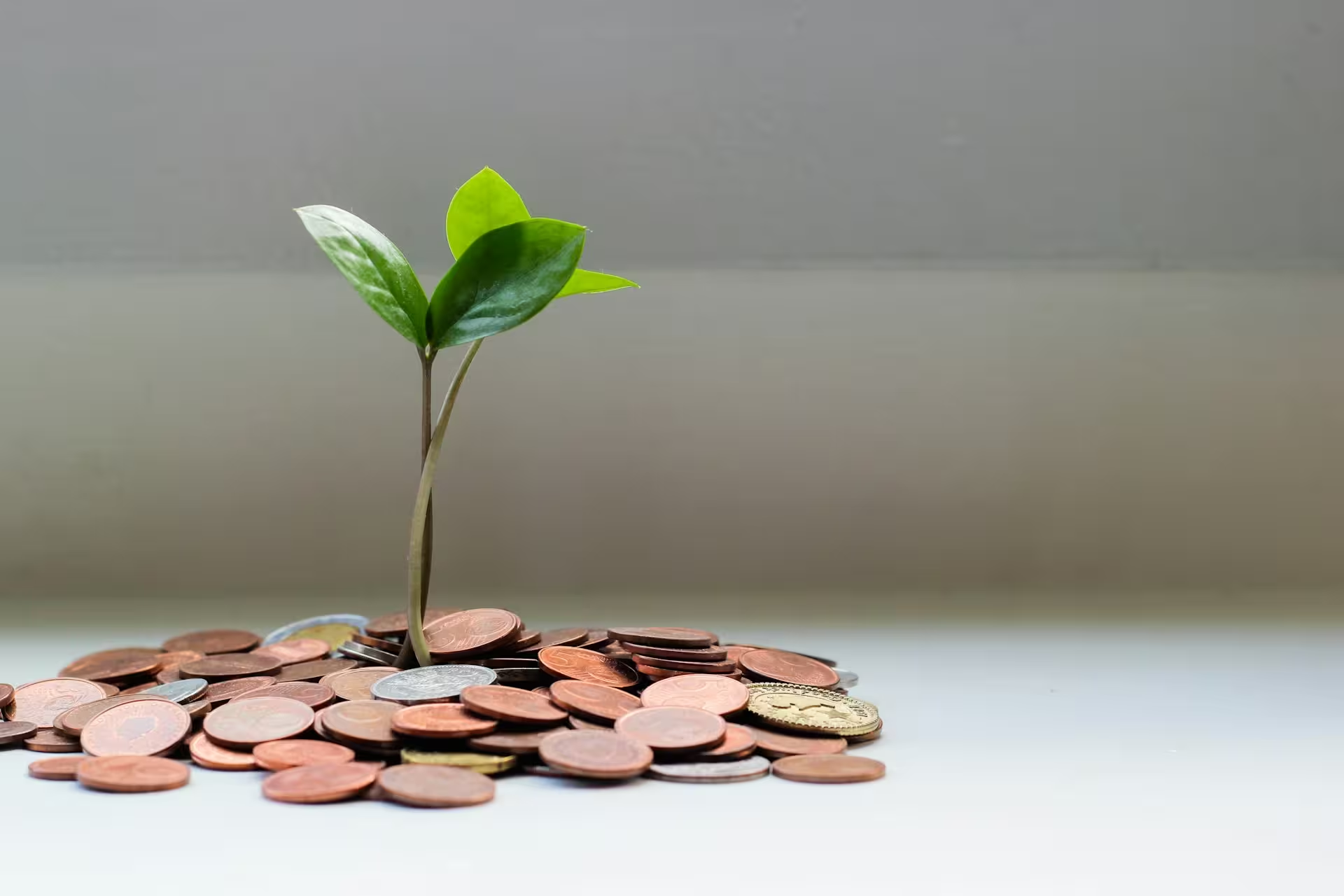You have a sum of 50,000 euros? This is excellent news and the starting point of an exciting wealth-building journey. But you are probably wondering: how can you grow this capital intelligently and sustainably? Faced with a multitude of options—between the security of savings accounts, the potential of the stock market, and the appeal of real estate—it is easy to feel lost. How should you allocate this amount so that it works for you without costing you sleepless nights? What pitfalls should you avoid and what strategies should you adopt to align your investments with your life projects, whether it is preparing for retirement, financing your children’s education, or simply building a solid estate?
This is not a decision to take lightly. The right investment is not universal; it is deeply personal. It depends on your objectives, your risk tolerance, and your time horizon. Taking the time to reflect is the first step towards successful investments tailored to your situation.
Before Investing Your 50,000 €: Essential Questions
Before you start, a little introspection is necessary. Answering these few questions will help you shape your investment strategy and make informed choices.
Saving or Investing: What Is Your Ambition?
The first distinction to make is between saving and investing. If you decide to save, your goal is to build a reserve of readily available money, without risk. It is your safety cushion, intended to face unexpected events (a “hard time”) or to finance a very short-term project. This savings, often placed in savings accounts, is liquid, meaning you can withdraw funds at any time. In return, its yield is low or even nil once inflation is taken into account.
If you choose to invest, your motivation changes: you seek to grow your money over the long term. The goal may be to prepare for your retirement, acquire real estate, or build capital for the future. To obtain a higher yield than classic savings, you accept a degree of risk and the immobilization of your capital for a longer or shorter period. Your funds are not always immediately accessible.
[[cta-platform]]
What Is Your Risk Profile?
The return/risk balance is the cornerstone of any investment. There is no investment offering high gains without proportional risk. It is therefore crucial to define your own “risk appetite”. Are you ready to see the value of your capital fluctuate downward in exchange for a potentially higher gain? Or do you prefer peace of mind with guaranteed capital, even if the return is modest?
The key to managing this risk is diversification. Never put all your eggs in one basket. If you invest 80% of your capital in real estate and the market crashes, your estate will suffer a significant loss in value. By spreading your 50,000 euros across different asset classes (stocks, real estate, bonds, etc.), you dilute the risk and smooth out the impact of fluctuations in one market on your entire portfolio.
What Is Your Investment Horizon?
The length of time you plan to let your money work is a decisive factor. Generally, three investment horizons are distinguished:
- Short term: less than 3 years.
- Medium term: between 3 and 10 years.
- Long term: 10 years and more.
The further ahead your horizon, the more you can afford to include risky but potentially more rewarding assets because you will have time to overcome possible market dips.
Expert Advice
The majority of financial advisors agree on one point: before any investment, build an emergency savings fund. This should represent between 3 and 6 months of salary. Place this amount in a liquid and risk-free vehicle, such as a regulated savings account, to be able to access it at any time in case of need.
Building the Base: Secure and Available Savings
Even for a seasoned investor, a solid and secure base is essential. It is the foundation of your wealth pyramid. Savings accounts, although their rates tend to decline, remain the preferred solution for this safety pocket.
State-regulated savings accounts are the most popular. Their interest is entirely exempt from income tax and social contributions.
| Type of Savings Account | Indicative Yield Rate (2024) | Deposit Ceiling | Main Conditions |
|---|
| Livret A | 3 % | 22,950 € | Accessible to everyone, no conditions. |
| LDDS | 3 % | 12,000 € | One per taxpayer domiciled fiscally in France. |
| LEP | 5 % (revisable) | 10,000 € | Income conditions apply. |
By combining Livret A, LDDS, and LEP (if eligible), you can place up to 44,950 € in a totally secure and tax-free manner. However, their yield often struggles to offset inflation. Keeping too much money in these accounts means a loss of purchasing power.
Once these accounts are full or if you seek an alternative for your short-term savings, super savings accounts (or boosted savings accounts) may be an option. Offered by banks, they provide attractive promotional rates for a few months before reverting to a base rate. Be careful, their interest is taxable (subject to the 30% flat tax).
Investing 50,000 Euros for the Long Term: Financial Investments
Once your emergency savings are established, it is time to make the rest of your capital work. For a medium- to long-term horizon, several investment envelopes are available to you.
Life Insurance: The Swiss Army Knife of Savings
Life insurance is the preferred investment vehicle for the French and an extremely versatile envelope. It allows investing across a wide range of supports while benefiting from a favorable tax framework. Within a contract, you can mix your investment between:
- Euro funds: capital is guaranteed, making it a secure vehicle. The yield is modest but stable. Ideal for the “cautious” part of your portfolio.
- Unit-linked funds (UC): investments on financial markets (stocks, bonds, real estate through SCPI/OPCI shares...). The yield potential is much higher, but capital is not guaranteed. You are exposed to market fluctuations.
The multi-support life insurance is the most common because it allows combining the security of euro funds and the dynamism of unit-linked funds. For those lacking time or knowledge, managed portfolios are an interesting option: an expert manages your contract based on the risk profile you have defined (conservative, balanced, dynamic).
The Tax Advantage of Life Insurance
After 8 years of holding, taxation on withdrawals is significantly reduced. You benefit from an annual allowance on capital gains of €4,600 for a single person and €9,200 for a couple. It is also a powerful transfer tool, with inheritance tax exemptions up to €152,500 per beneficiary (for contributions made before age 70).
Investing in the Stock Market: PEA and Securities Account
To energize your wealth, direct stock market investment is a strategy to consider. Two main investment envelopes exist:
- Plan d'Épargne en Actions (PEA): allows investing in shares of European companies. Its main advantage is taxation: after 5 years of holding, capital gains are exempt from income tax (only social contributions of 17.2% remain payable). This is the preferred envelope for long-term equity investment. The maximum deposit limit is €150,000.
- Ordinary Securities Account (Compte-Titres Ordinaire - CTO): more flexible than the PEA, with no deposit ceiling nor geographical constraints (you can invest in stocks worldwide). However, its taxation is less advantageous: gains (dividends and capital gains) are subject by default to the 30% flat tax.
Beware of Volatility
Investing in the stock market means accepting market rollercoasters. The value of your portfolio can fluctuate sharply in the short term. Invest in shares only money you won’t need for at least 5 to 10 years. For beginners, ETFs (trackers), which replicate the performance of an index (such as the CAC 40 or Eurostoxx 50), are an excellent way to diversify at low cost.
Diversifying Beyond Traditional Financial Markets
For a truly resilient portfolio, it is wise to look beyond stocks and bonds. Real estate and alternative assets offer sources of return uncorrelated with financial markets.
“Paper Real Estate” (SCPI): Real Estate Without the Constraints
Do you dream of investing in real estate but 50,000 € is not enough to buy a property directly, and you want to avoid the hassles of rental management? The Real Estate Investment Company (SCPI) is made for you. The principle is simple: you buy shares in a company that owns and manages a professional real estate portfolio (offices, shops, warehouses...).
The advantages are numerous:
- Low entry ticket: accessible from a few hundred euros per share.
- Regular income: you receive quarterly rents, proportional to your shares.
- Immediate diversification: with a single share, you are invested in dozens of buildings and tenants.
- Delegated management: the management company takes care of everything.
Other forms of indirect real estate investment exist, such as OPCI (more liquid because they include a financial assets portion) or real estate crowdfunding (project financing over a short period, with high returns but concentrated risk).
Retirement Savings Plan (PER): Preparing for the Future by Optimizing Taxation
If your investment horizon is very long and your main goal is to prepare for retirement, the PER is a powerful tool. Its main advantage is taxation: the amounts you contribute to your PER can be deducted from your taxable income (within certain limits), which generates an immediate tax saving.
Like life insurance, the PER allows investment in euro funds and unit-linked funds. The money is generally locked until retirement (except for early withdrawal in cases like buying your main residence). On exit, you can choose to receive your capital, an annuity for life, or a combination of both.
What If You Gave Meaning to Your Investment? Impact Finance
Investing in 2025 is no longer just about seeking financial returns. It is also the possibility to make your money a lever for positive change. Impact finance is gaining ground, driven by a strong conviction: economic performance and ecological responsibility are no longer opposed.
[[cta-impact]]
Carbon Quotas: A Next-Generation Asset for Decarbonization
Among the most promising innovations, a market previously reserved for experts is finally opening to the general public: carbon quotas. At Homaio, we have made this asset accessible to all. The idea is as simple as it is powerful: buy “pollution rights” (tons of CO2) to remove them from the market and prevent their use by polluting industries.
This is a double-performance investment:
- Financial performance: climate regulations are tightening, and the number of available quotas is decreasing. This growing scarcity pushes prices higher, creating attractive appreciation potential for investors.
- Real environmental impact: each quota you hold corresponds to one ton of CO2 that will not be emitted into the atmosphere. You contribute directly and measurably to the economy’s decarbonization path.
Thanks to our platform, you can invest in this future asset in just a few clicks, monitor your financial and environmental performance in real time, and actively participate in climate transition. It is an opportunity to diversify your estate with a tangible asset, uncorrelated to traditional markets, and full of meaning.
Sample Allocation for a Balanced Profile with 50,000 €
To put these tips into practice, here is a proposed allocation for a “balanced” risk profile, seeking a good compromise between safety, return, and diversification.
| Investment Category | Allocated Amount | Percentage | Main Objective |
|---|
| Emergency Savings (Savings Accounts) | 5,000 € | 10 % | Safety, liquidity, unexpected events |
| Life Insurance (60% euro funds, 40% unit-linked) | 15,000 € | 30 % | Long-term growth, taxation, inheritance |
| PEA (Global ETFs) | 12,500 € | 25 % | Dynamism, global equity performance |
| “Paper Real Estate” (SCPI) | 10,000 € | 20 % | Supplementary income, real estate diversification |
| Impact Finance (Carbon Quotas) | 7,500 € | 15 % | Diversification, financial return, ecological impact |
| Total | 50,000 € | 100 % | |
This portfolio is an example. It must be adapted to your personal situation, convictions, and projects. The important thing is to understand the diversification logic and allocate your capital thoughtfully.
Investing 50,000 euros is a significant step. The key to success does not lie in searching for a miracle product but in building a diversified strategy aligned with who you are. By combining the security of savings accounts, the potential of life insurance and the stock market, the stability of real estate, and the innovation of impact finance, you maximize your chances of achieving your financial goals while preparing for a more sustainable future. You now have the cards in hand to start building your own wealth path.
[[cta-simulateur]]
FAQ: Your Questions About Investing 50,000 Euros
What Is the Best Investment for 50,000 Euros Without Any Risk?
The only investment guaranteeing your capital 100% is the euro fund of a life insurance contract or state-regulated savings accounts (Livret A, LDDS). However, “without risk” does not mean “without loss of value.” With a yield often below inflation, your purchasing power can decline over time. True long-term wealth security comes from measured diversification, including a share of more dynamic assets to offset the effects of inflation.
How Long Does It Take to Grow 50,000 Euros?
There is no single answer, as it depends on the chosen investments. With secure vehicles, growth will be slow and steady. In the stock market or growth assets, potential is higher but requires a long-term horizon (ideally 8 to 10 years or more) to smooth volatility and let compound interest work. Real estate crowdfunding or some structured products may offer returns over shorter periods (2 to 5 years) but with higher associated risk.
Can I Invest 50,000 Euros If I Know Nothing About Finance?
Absolutely. Lack of knowledge should not be a barrier. Several solutions are available to you:
- Managed portfolios: available in life insurance contracts or PER, they entrust managing your money to professionals.
- ETFs (trackers): these index funds are a simple and low-cost way to gain exposure to an entire market (CAC 40, S&P 500...) without having to pick individual stocks.
- Thematic investment platforms: players like Homaio provide simplified and educational access to innovative asset classes, such as carbon quotas, guiding you every step of the way.
You can also get support from a wealth management advisor to build a tailor-made strategy.


.avif)



.avif)




